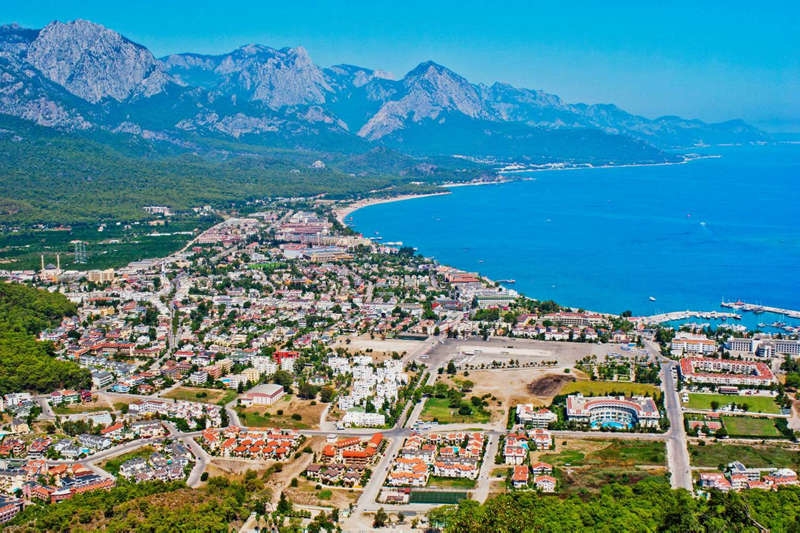Kemer Transfer
Kemer is a district located 32 kilometers away from Antalya on the Mediterranean coast. Until the early 1980s, it was a small village, but in the last 20 years, with the establishment of various facilities, it has become one of the most important centers of Turkish tourism. It first became a village, then on December 30, 1985, gained the status of a town, and on September 13, 1991, it became a district. As of the end of 2022, its population is 49,383.
Kemer is one of Turkey's most important tourism centers, located at the foothills of the Western Taurus Mountains and stretching along a 52-kilometer coastline. In the place where Kemer stands today, there was a settlement known as Eski Köy in the 1910s, which was formed from lakes and swamps due to floods from the mountains. The people of Eski Köy built a 23-kilometer stone wall at the foot of the mountains to protect themselves from these floods. Later, they named their village Kemer after this wall.
The oldest known history of Kemer dates back to 690 BC, with the founding of the ancient city of Phaselis.
Until the 1960s, Kemer had no road access and was only reachable by sea. After 1980, with the implementation of the South Antalya Tourism Project, it gained road and infrastructure, developing rapidly into one of Turkey's most popular tourism centers. The surrounding settlements such as Kiriş, Tekirova, Çamyuva, Arslanbucak, Kuzdere, Beycik, Göynük, Beldibi, and Çıralı are also crucial to Antalya's tourism industry.
One of Kemer's main attractions is its natural beauty. The sea, forest, and mountains meet at one point. The clarity of the sea, the greenery of the forest, the sea waves reaching the pine trees, and the use of pine trees for shade on the beaches are very appealing. From Beldibi to Tekirova, the entire coastline consists of natural beaches. There are many coves and small natural harbors along the rugged coastline. In the town center, the public beach and the Ayışığı Beach near the marina are notable. It is also easy to swim at beaches like the Phaselis beach, where the ancient city still stands and is a national park. Visitors can also use the pools and beaches of various accommodations for a fee. Close to Kemer, the ancient cities of Olimpos and Phaselis can be reached. In recent years, safari tours to higher locations such as Gedelme Plateau, Söğüt Cuması, Altınyaka (Gödene), Üçoluk, and Dereköy have also gained popularity.
Other attractions in the region include caves, such as the Beldibi Cave located 27 km southwest of Antalya by the sea, which contains prehistoric remains. Another cave worth visiting is Molla Deliği, located on the eastern slope of Mount Tahtalı to the west of Kemer. The only way to access this cave is by walking from either the Aşağı Kuzdere or Tekirova villages along the Kemer–Kumluca road, which takes 3–4 hours.
Kemer is also significant in yacht tourism, with its modern marina that can accommodate 320 yachts. The marina and its 52-kilometer coastline have earned the Blue Flag certification by meeting the criteria set by the European Environmental Education Foundation (FEEK).
Notable places to see around Kemer include: the Ancient City of Olimpos, Chimera (the Burning Stone), Adrasan, Three Islands, Göynük Canyon, İkiz Kayalar, Ekopark, Ulupınar, the Seljuk Hunting Pavilion, the Kemer Clock Tower, Gedelme Plateau, and the Beydağları Mountains, an extension of the Western Taurus.
As MY Kartas Vip Transfer, we would be honored to show you around our beautiful Antalya.

